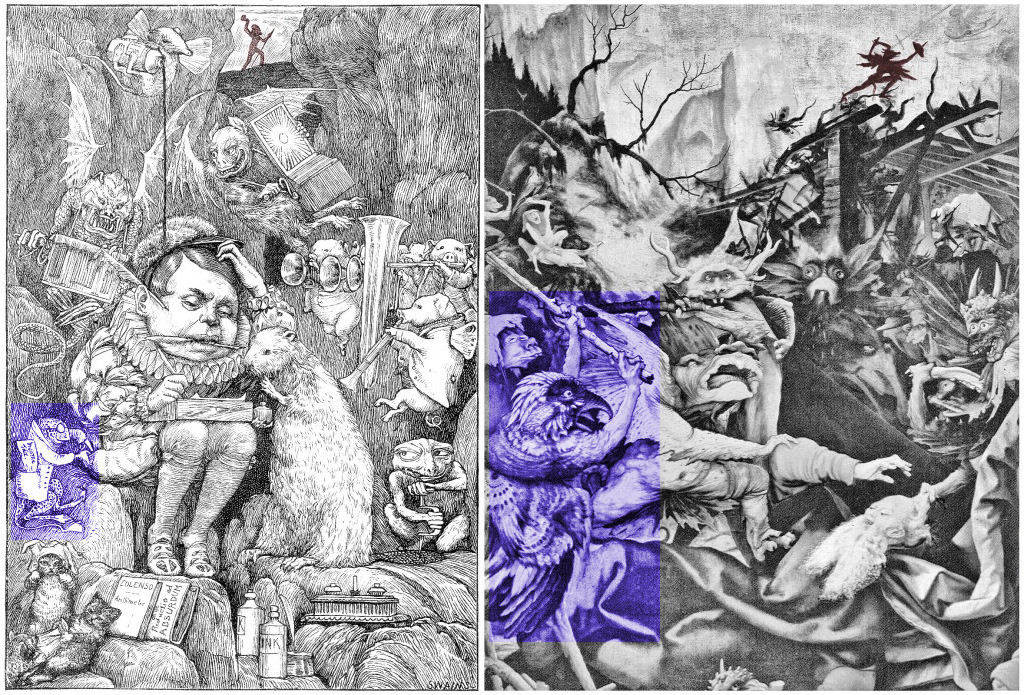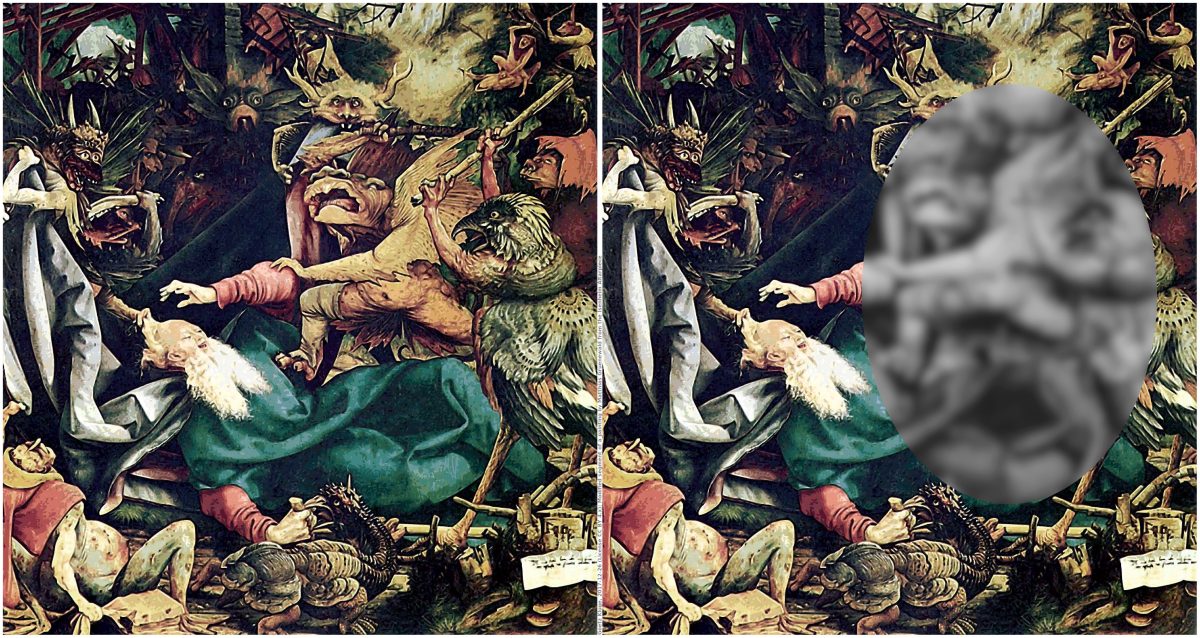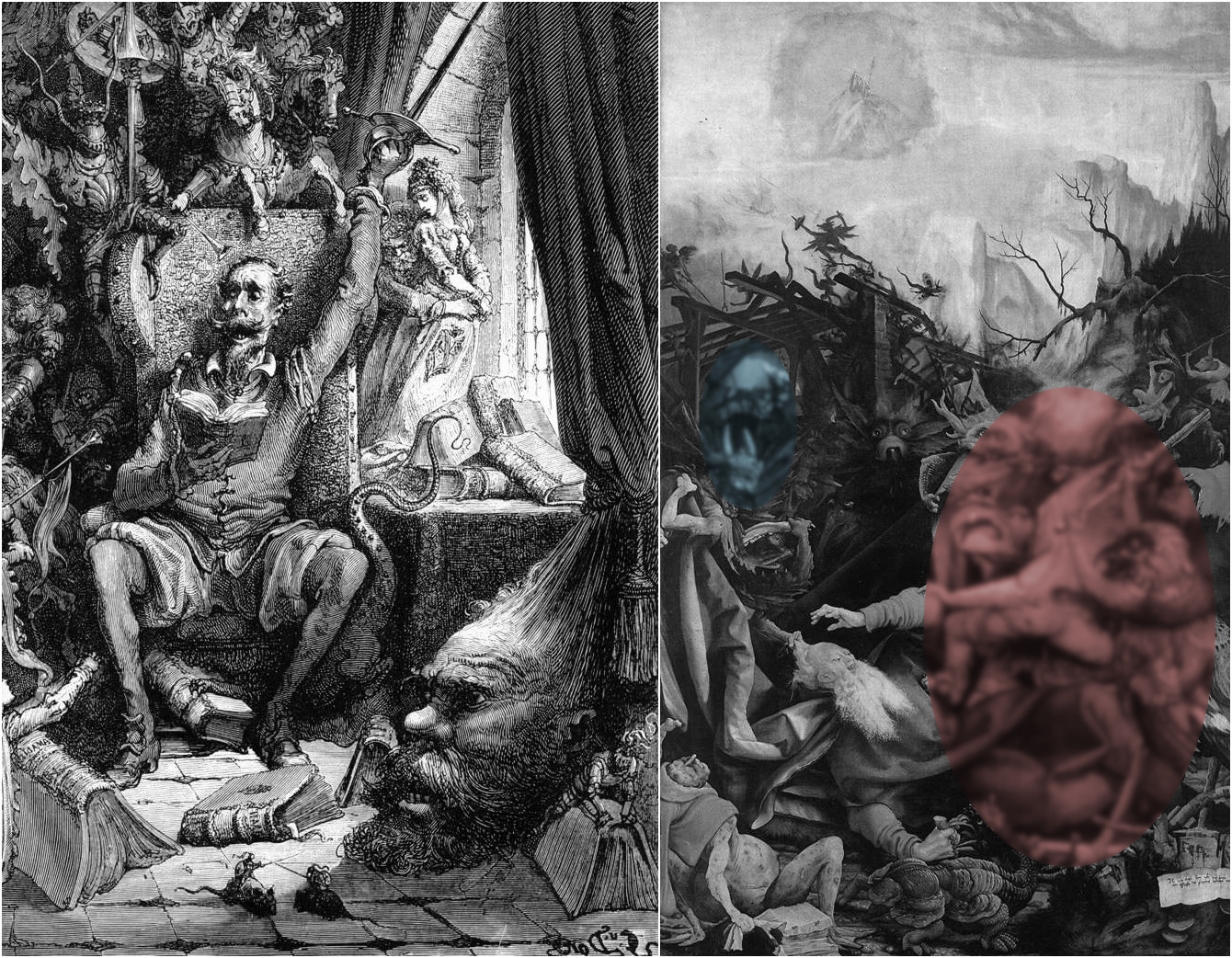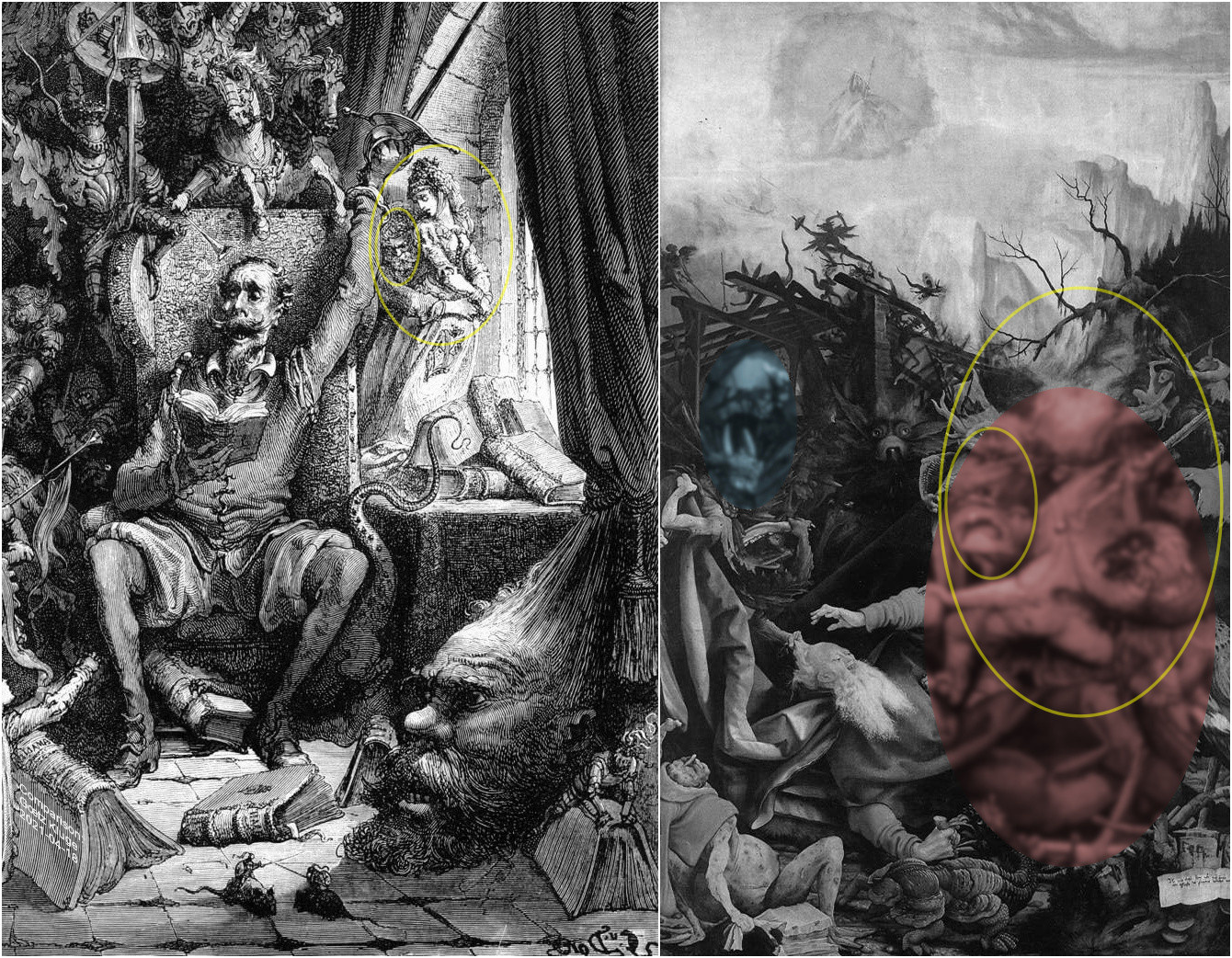I try to play with my pareidolia like Gustave Doré and Henry Holiday might have played with their pareidolia.
2013 (Gustave Doré, Henry Holiday, Gustave Doré)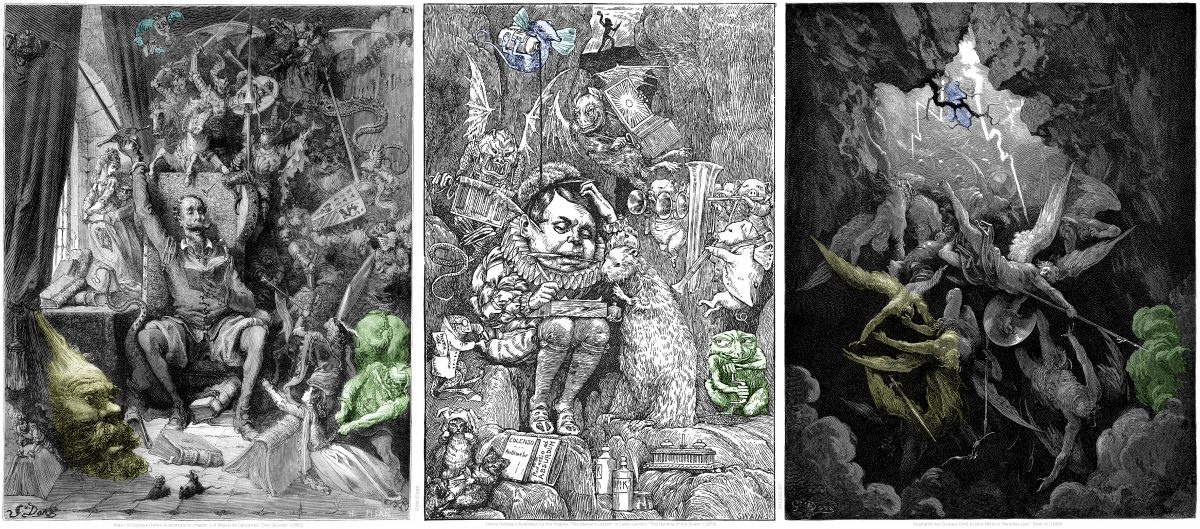 Gustave Doré and Henry Holiday were playing with Gustave Doré.
Gustave Doré and Henry Holiday were playing with Gustave Doré.
2015 (Gustave Doré, Matthias Grünewald, Henry Holiday)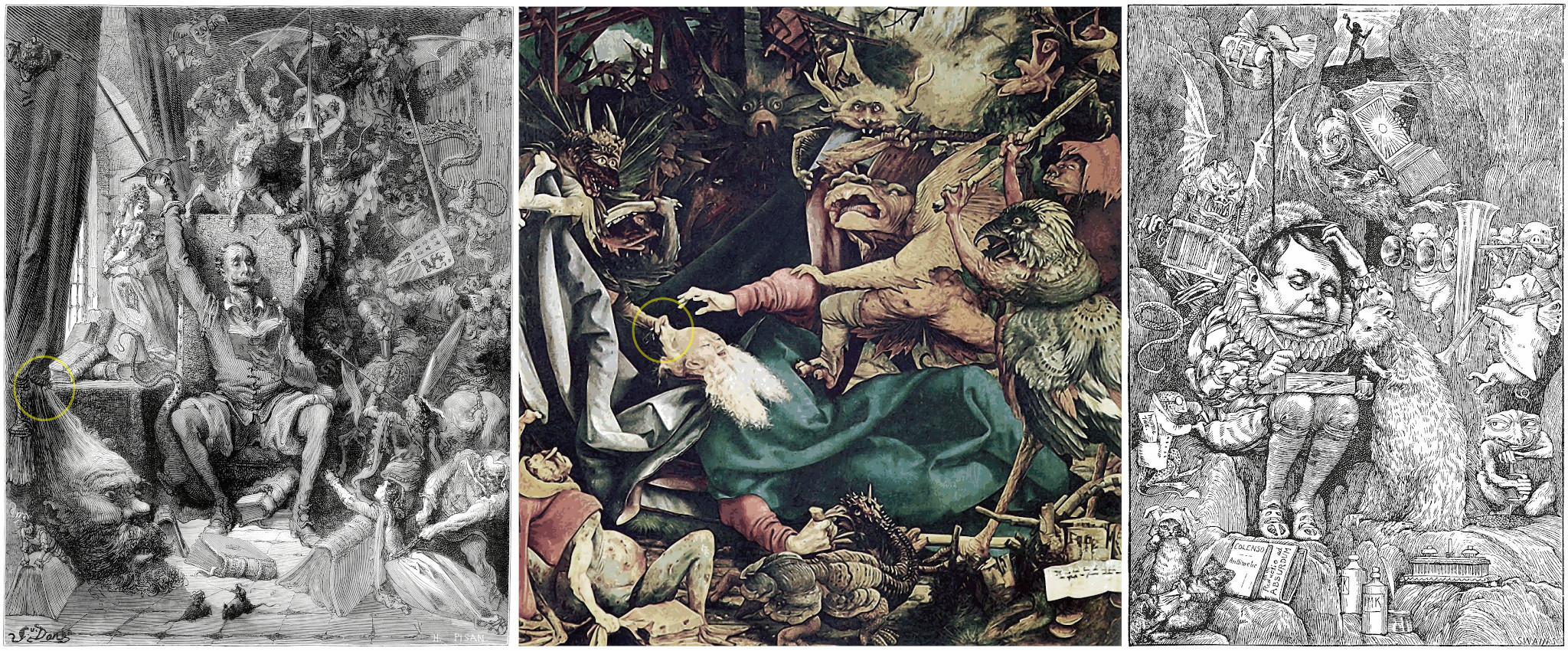
2017 (Henry Holiday, Matthias Grünewald)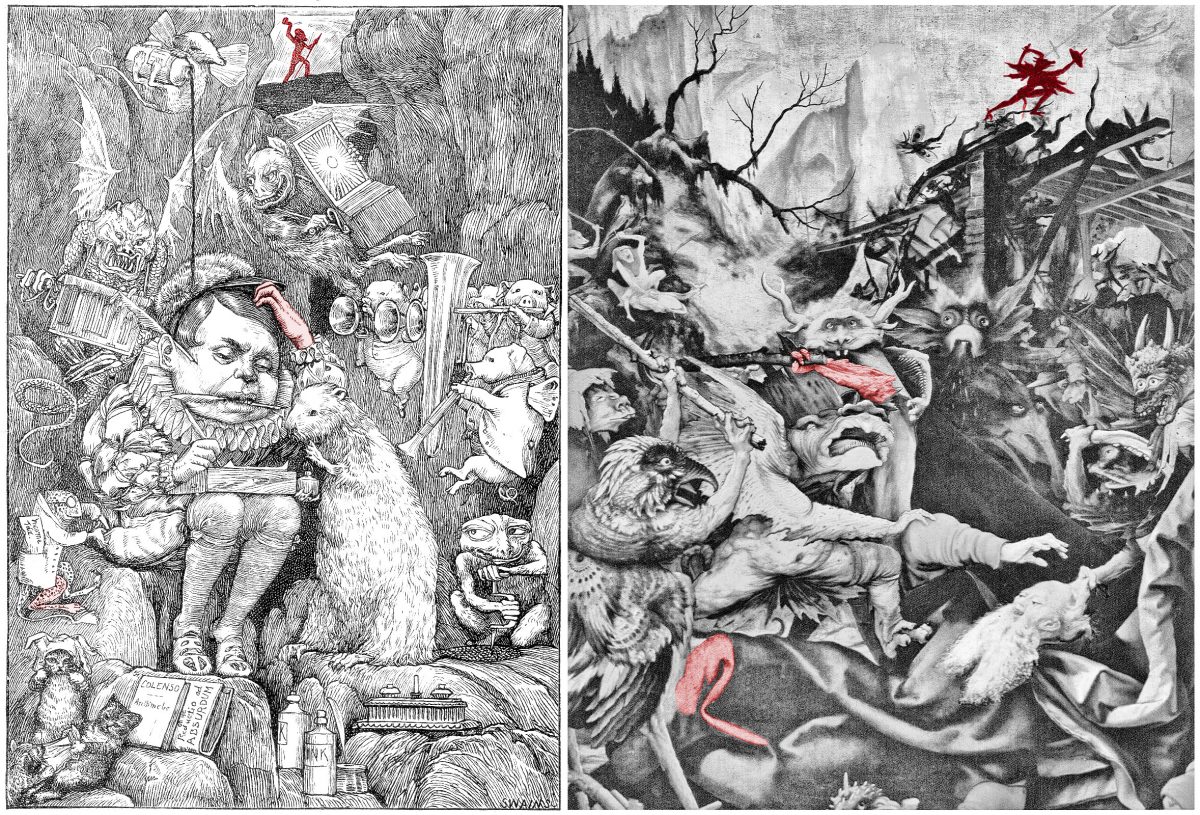
2019 (Musée Unterlinden)
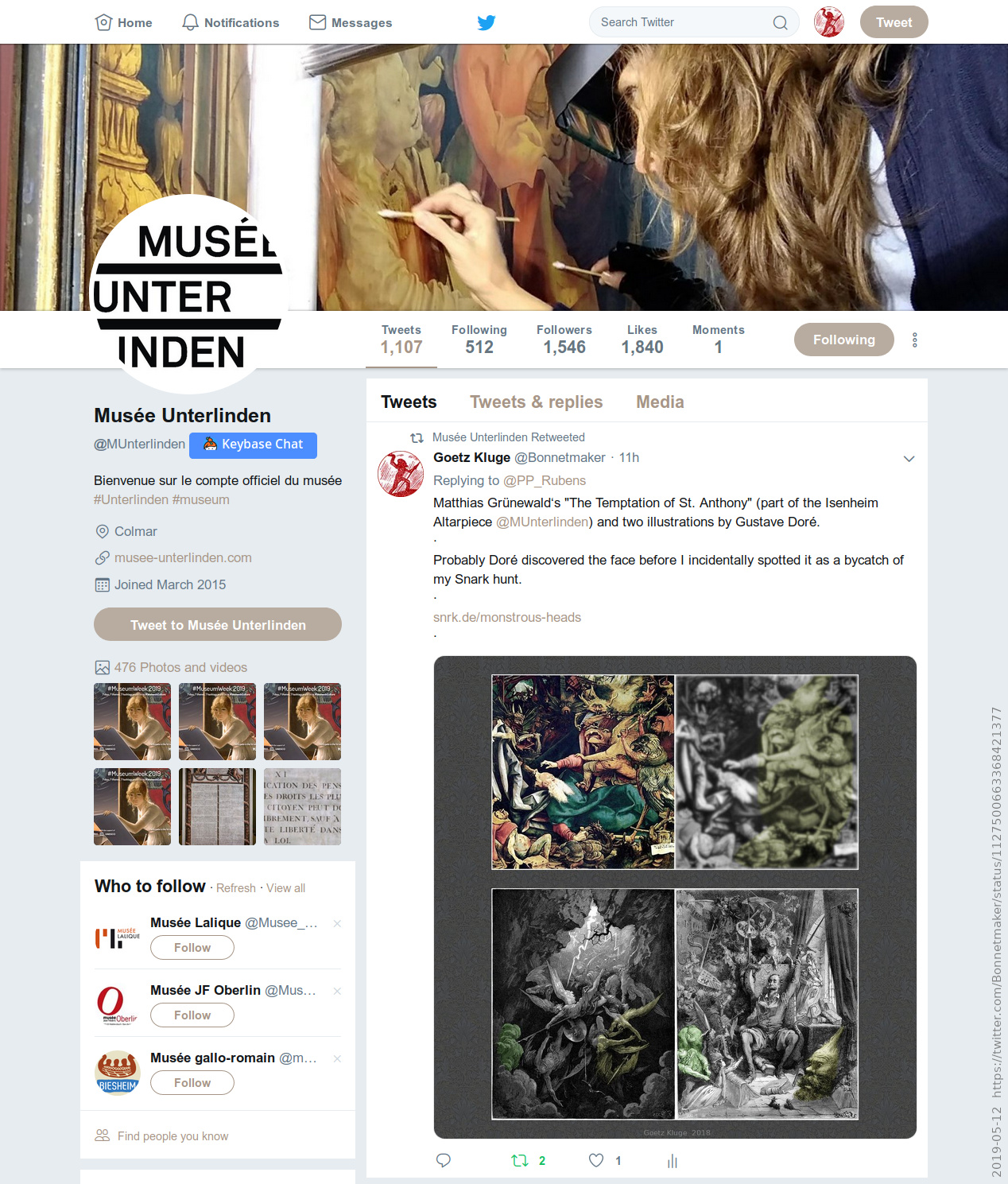

2021 (Gustave Doré, Matthias Grünewald)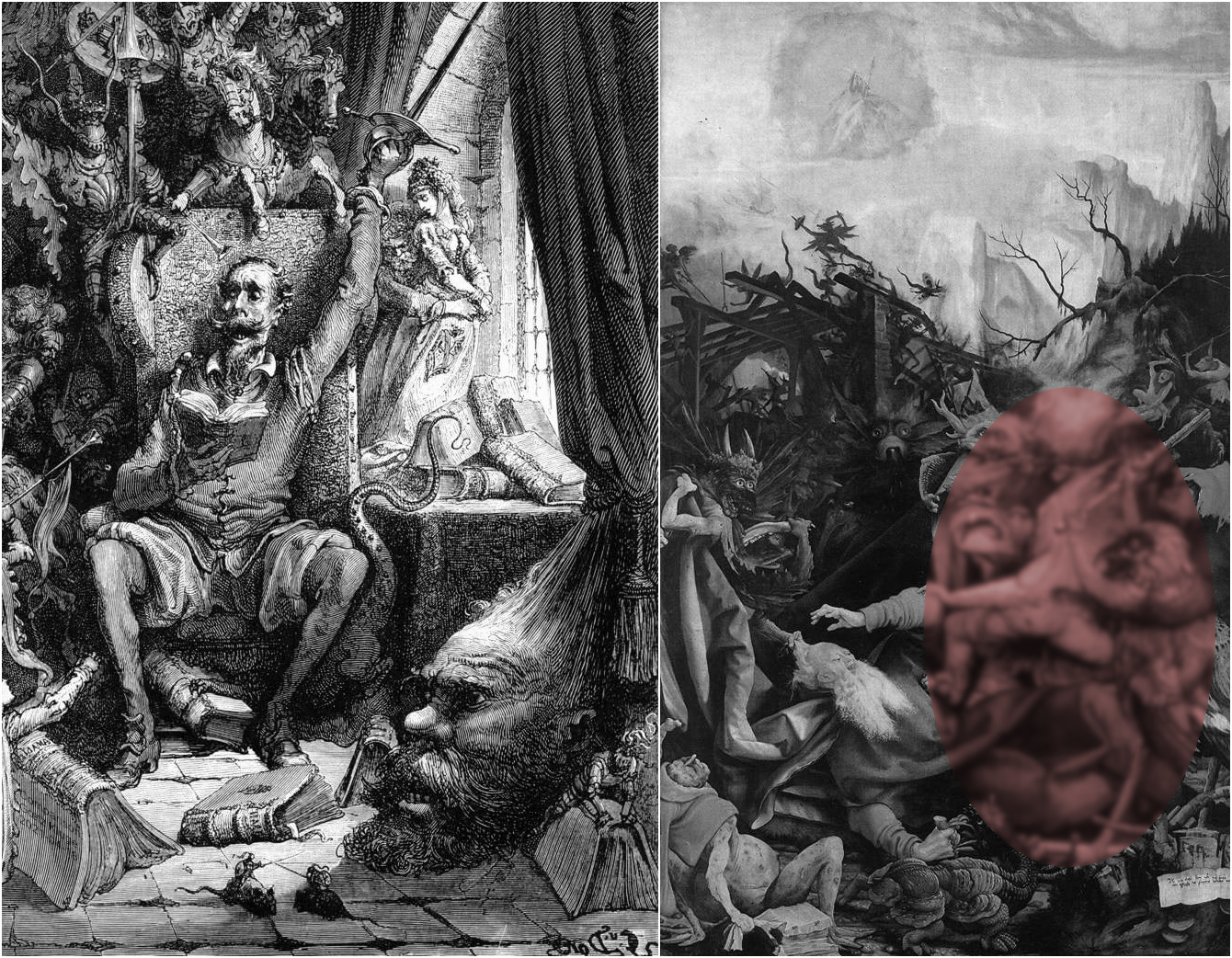
To artists (as well as to monkeys), pareidolia can work as a creativity tool:
«Look at walls splashed with a number of stains, or stones of various mixed colours. If you have to invent some scene, you can see there resemblances to a number of landscapes, adorned with mountains, rivers, rocks, trees, great plains, valleys and hills, in various ways. Also you can see various battles, and lively postures of strange figures, expressions on faces, costumes and an infinite number of things, which you can reduce to good integrated form. This happens on such walls and varicoloured stones, (which act) like the sound of bells, in whose peeling you can find every name and word that you can imagine.
Do not despise my opinion, when I remind you that it should not be hard for you to stop sometimes and look into the stains of walls, or the ashes of a fire, or clouds, or mud or like places, in which, if you consider them well, you may find really marvelous ideas. The mind of the painter is stimulated to new discoveries, the composition of battles of animals and men, various compositions of landscapes and monstrous things, such as devils and similar things, which may bring you honor, because by indistinct things the mind is stimulated to new inventions.»
— Leonardo da Vinci. Reprinted from the Oxford edition of Selections from the Notebooks of Leonardo da Vinci, edited by Irma A. Richter. The selections are from da Vinci’s A Treatise on Painting (Trattato della pittura).

Segments from:
※ Plate I (mirror view) of Gustave Doré’s illustrations to Miguel de Cervantes’ Don Quixote (1863),
※ Matthias Grünewald (Mathis Gothardt-Neithardt), Temptation of St Anthony (c. between 1512 and 1516, a panel of the Isenheim Altarpiece, now located at Museé Unterlinden, Colmar, France).
2021 (Henry Holiday, Gustave Doré, Matthias Grünewald)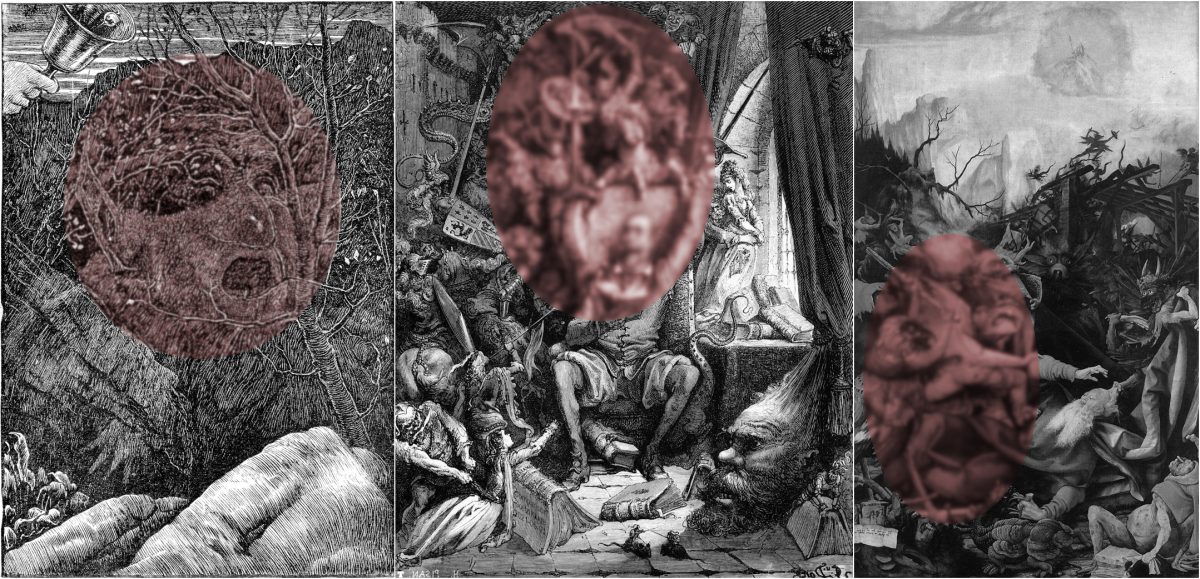 A chain of allusions: Henry Holiday may have discovered that Gustave Doré spotted the hidden face in Matthias Grünewald’s painting, and then Holiday just continued to play Grünewald’s and Doré’s game.
A chain of allusions: Henry Holiday may have discovered that Gustave Doré spotted the hidden face in Matthias Grünewald’s painting, and then Holiday just continued to play Grünewald’s and Doré’s game.
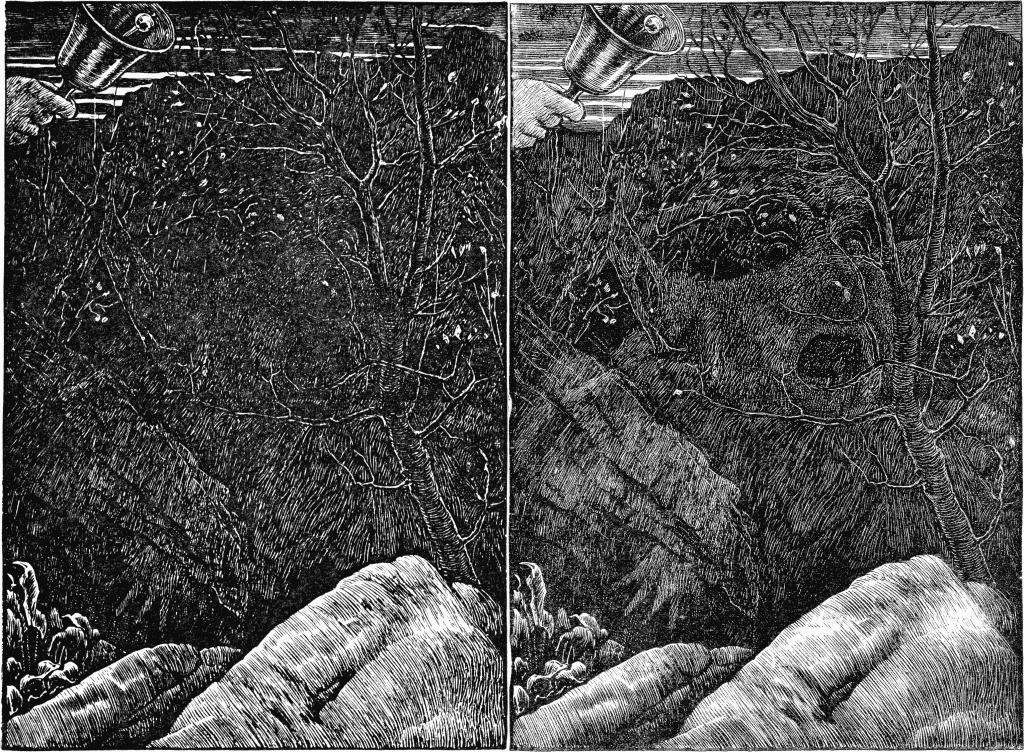 The image on the left side is Henry Holiday’s illustration to the last “fit” of The Hunting of the Snark. I think that in most editions of Carroll’s tragicomedy the rendering of that final illustration is darker than intended by Henry Holiday and Joseph Swain (the engraver). That also might have hidden the Baker’s face more than intended. So I grew the white areas a bit.
The image on the left side is Henry Holiday’s illustration to the last “fit” of The Hunting of the Snark. I think that in most editions of Carroll’s tragicomedy the rendering of that final illustration is darker than intended by Henry Holiday and Joseph Swain (the engraver). That also might have hidden the Baker’s face more than intended. So I grew the white areas a bit.
related posts and pages in snrk.de
2021-04-18, updated: 2023-11-04

